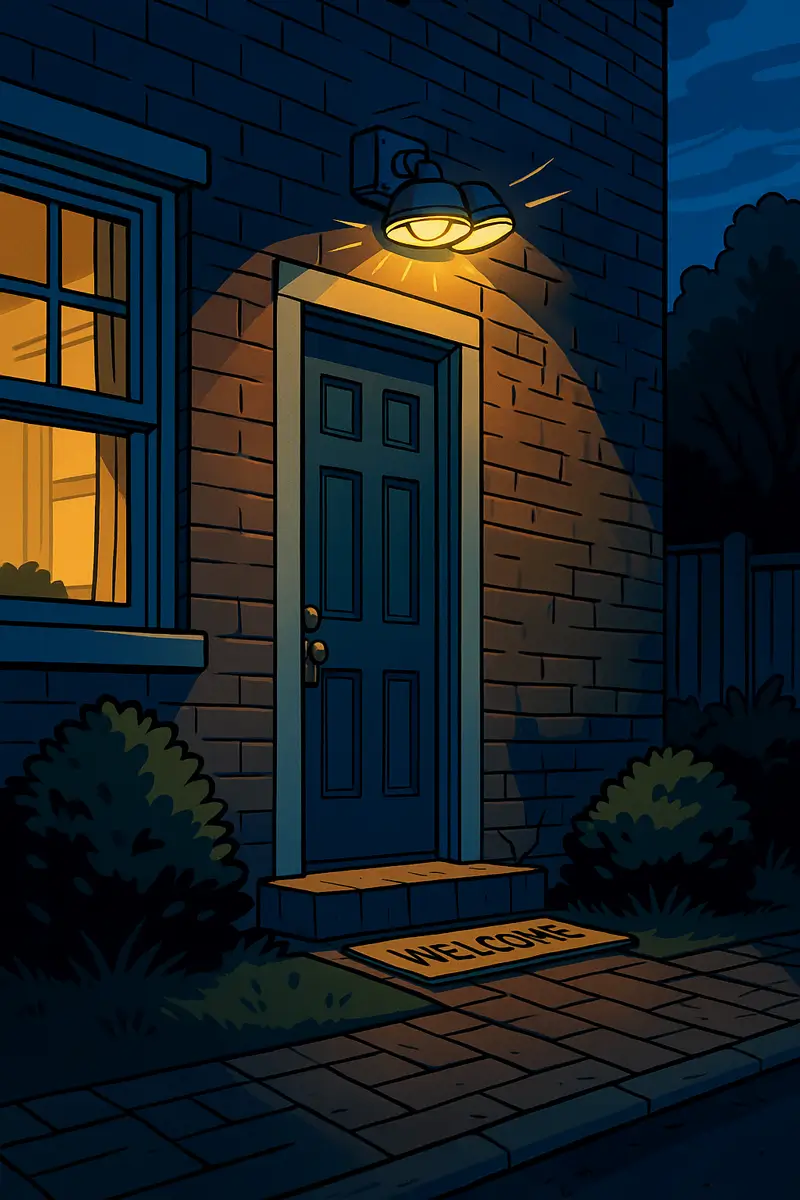
Poor exterior lighting can show up in multiple ways: dead fixtures that won’t turn on, flickering or dimming flood lights, motion sensors that either stay on constantly or never trigger, or hot spots and dark shadows due to poorly aimed fixtures. A light that flashes on and off is often the first sign that something’s wrong. According to a lighting industry blog, up to 10% of LED failures are linked to voltage instability, voltage drops or wiring problems, and ignoring flickering can cause permanent damage or even fire hazards. Loose wiring connections, corrosion, or poor installation can interrupt the power supply and cause irregular blinking. Failures may also be traced to a faulty LED driver or power supply, power surges from storms or the grid, or incompatible dimmer switches designed for incandescent lights. Moisture intrusion—due to a low IP rating, missing gaskets or damaged fixtures—can short out flood lights.
Our region’s climate is hard on outdoor lighting. Heavy rain, thunderstorms and high humidity make water ingress a constant threat. Improperly rated fixtures or missing protective covers allow water to seep in; this is more likely during periods of heavy rain. If a fixture’s IP rating is too low, dust and water can enter and cause failures. Installing a light at the wrong angle or ignoring manufacturer instructions can invite water and lead to shock risks. Edges or seals of flood lights can crack over time; when these are compromised, moisture penetrates and quickly ruins the fixture—especially during inclement weather. Many homes still use halogen floods or old motion sensors that weren’t designed for today’s LED fixtures; incompatible dimmer or smart switches contribute to blinking. Motion lights may misbehave after power surges, faulty wiring or defective sensors, issues that are common after storms or with old infrastructure. In winter, extreme cold can make sensors less responsive, while dense tree canopies and narrow lots make it tricky to aim lights for consistent coverage.
Poor or failed lighting is more than an inconvenience. Flickering and flashing can strain eyes and reduce visibility; one study cited by the Lighting Research Center found that irregular illumination can reduce night‑time visibility by up to 40 %. Prolonged flicker often points to a failing driver or power supply, and continued use can cause components to overheat or catch fire. Loose wiring or corroded terminals can create short circuits and shock hazards. Water‑damaged fixtures can energize the housing or trip the GFCI, leaving circuits dead. Dim or absent flood lights leave entries, walkways and driveways in darkness, increasing the risk of slips, falls and security incidents. Using a fixture with a low IP rating or damaged edges increases the chance that moisture will penetrate and affect other parts of the electrical system. Incompatible dimmers or overloaded circuits may trip breakers, leaving your exterior lights unreliable.
Replace bulbs or reset your sensor first, but if flickering persists, the motion light stays on, or the fixture repeatedly trips the GFCI, call a professional. A licensed electrician will test the circuit, verify the wiring and driver and look for loose or corroded connections. They’ll inspect the fixture for internal damage from storms or surges, confirm the IP rating is appropriate, and evaluate whether the flood light is aimed and mounted correctly (including weather‑proof boxes and seals). If the driver or sensor is defective, they can replace it with a compatible LED unit. They’ll also check if a dimmer or smart switch is causing the problem and install a surge protector if surges are suspected. For homes lacking sufficient coverage, they can design a lighting layout that provides even illumination without glare. Calling a pro ensures you get lights that are bright, well‑aimed, fully sealed and properly controlled—improving safety and security.
Don’t let flickering flood lights or dark spots leave you in the dark. Moisture, loose wiring, power surges and incompatible components can all wreak havoc on exterior lighting. A professional will identify the underlying issue, replace or upgrade the fixture, and ensure your home’s perimeter is bright, secure and energy‑efficient, even through the heaviest DMV storms.
Dr. Electric offers a range of services to enhance safety, reliability, and performance. Get in touch or check out our List of Common Electrical Requests.
You can also text our support team at 833-337-3532 or email: info@drelectric.com